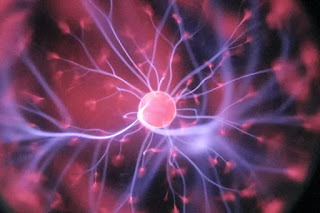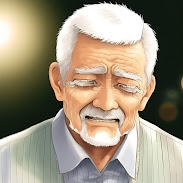Ethen, Meth, Exercise and the Polyvagal
Ethan. His childhood had been marred by a dark cloud of trauma, casting a long shadow over his adult life. Lost and spiraling, he found solace in the destructive embrace of methamphetamine addiction.
One fateful day, while desperately seeking an escape from the clutches of his addiction, Ethan stumbled upon a tattered flyer advertising a local gym. Intrigued yet skeptical, he decided to give it a chance. Little did he know that this decision would become a turning point in his life.
Ethan walked through the gym doors, his weary heart heavy with doubt. But as he immersed himself in the world of exercise, something remarkable began to unfold. He discovered that engaging in physical activity not only helped strengthen his body but also provided a sanctuary for his troubled mind.
As Ethan delved deeper into his fitness journey, he stumbled upon the concept of the polyvagal system—a fascinating framework that explained the interplay between the mind, body, and emotions. Intrigued, he researched and learned how trauma could disrupt this delicate balance, leading to a constant state of fight, flight, or freeze.
Armed with this newfound knowledge, Ethan started to approach exercise with intention. He understood that his body’s autonomic nervous system needed recalibration to heal from the trauma and addiction. Through his workouts, he consciously engaged in exercises that stimulated his vagus nerve, which played a vital role in regulating his body’s stress response.
With each session, Ethan could feel the transformative power of exercise. As he pushed his physical limits, his body responded by releasing endorphins and oxytocin, fostering a sense of well-being and connection. The rhythmic movements and increased heart rate activated his parasympathetic nervous system, gradually retraining his body to find balance and peace.
Over time, the toxic grip of addiction loosened its hold on Ethan. His newfound passion for exercise became an anchor, providing him with a healthy outlet to process emotions and reestablish a sense of control. With each rep, he channeled his pain and frustration, transforming them into strength and resilience.
As the months went by, Ethan’s physical appearance underwent a remarkable transformation, but it paled in comparison to the profound changes happening within. The once shattered soul began to mend, and a glimmer of hope grew brighter with every workout.
Ethan’s story of triumph over childhood trauma and meth addiction spread throughout the community. Others who had felt trapped and hopeless found inspiration in his journey. He became a beacon of resilience, advocating for the power of exercise in healing not just the body but also the scars etched upon the soul.
In the end, Ethan’s personal odyssey became a testament to the incredible capacity of the human spirit to rise above adversity. By embracing the polyvagal system and using exercise as a catalyst for healing, he rewrote his narrative and reclaimed his life. And in doing so, he empowered countless others to embark on their own path of self-discovery and restoration.

POLYVAGAL
The polyvagal system was introduced by Dr. Stephen Porges as an invaluable concept that explains the relationship between trauma, addiction, and our autonomic nervous system operating in our bodies. The essence of Polyvagal theory is how our nervous system reacts to perceived threats, or rather safe cues trigger different emotional and behavioral responses patterns.
Unfortunately, early childhood experiences of trauma have been shown to interfere with the development of this polyvagal system resulting in lifelong difficulties later in life when dealing with overwhelming stress or traumatic events. This dysregulation leads us to struggle with lower emotional regulation skills responding excessively towards conflicts and other emotionally laden circumstances.
Underlying such dysregulation transformational therapy can also experience challenges for maintaining their composure when exposed to potential threats while also struggling to distinguish safe from harmful environments.
As a result of these uncontrolled physiological reactions triggered through traumatic experiences coupled with heightened arousal individuals troubled by addiction frequently resort to addictive substances/behaviors as a temporary 'fix,' although only temporarily calming hyperarousal rather than addressing the deeper problem.
Furthermore; disruptions within parasympathetic functioning interfere specifically with their ventral vagus pathways responsible for promoting safety, social interaction and healthy relationships too - all crucial elements for fostering healing post-trauma addiction issues.
Therefore finding ways to heal requires addressing dysregulated polyvagal systems - granted providing effective forms of therapy offers hope for those struggling tremendously due to life's adversity. Such approaches help foster self-regulation skills establishing safer spaces so affected people don't feel continually overwhelmed and coping mostly through methods they may regret later on. Viewing recovery holistically entails looking at all components that contribute to it - including how trauma and addiction interact with our bodies' polyvagal system.
Individuals can strengthen their capacity for resilience and improve their emotional well being when underlying dysregulation within their autonomic nervous systems is addressed as part of their overall healing process. This comprehensive approach fosters sustainable progress towards greater stability amid adversity while also benefiting professionals who work alongside them in this journey of self improvement.
Tim Welch, LPCC Mental Health Counseling,
Newark, Ohio Licking County Online Therapy. Virtual Counseling for Alcohol Addiction, Drug Addiction, Anxiety, Depression & Mental Health Issues.


